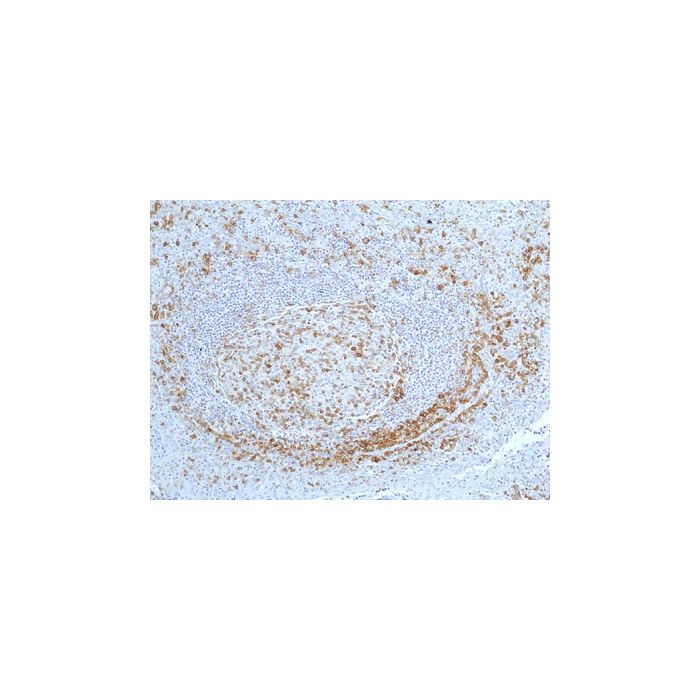Cookie Policy: This site uses cookies to improve your experience. You can find out more about our use of cookies in our Privacy Policy. By continuing to browse this site you agree to our use of cookies.
RevMab
anti-CD27 (human), Rabbit Monoclonal (RM501)

| Product Details | |
|---|---|
| Synonyms | T Cell Activation Antigen CD27; T14; TNFRSF7; Tumor Necrosis Factor Receptor Superfamily Member 7; S152 |
| Product Type | Recombinant Antibody |
| Properties | |
| Clone | RM501 |
| Isotype | Rabbit IgG |
| Source/Host | Rabbit |
| Immunogen/Antigen | A peptide corresponding to residues near the C-terminus of human CD27. |
| Application |
Immunohistochemistry (IHC): 1:100-1:200 dilution |
| Crossreactivity | Human |
| Specificity |
RM501 reacts to human CD27 (TNFRSF7). |
| Purity | Protein A purified. |
| Purity Detail | Protein A affinity purified from an animal origin-free culture supernatant. |
| Concentration | N/A |
| Formulation | Liquid. 50% Glycerol/PBS with 1% BSA and 0.09% sodium azide. |
| Isotype Negative Control | |
| Other Product Data |
Click here for Original Manufacturer Product Datasheet |
| Accession Number | P26842 |
| Declaration | Manufactured by RevMab Biosciences. |
| Shipping and Handling | |
| Shipping | BLUE ICE |
| Long Term Storage | -20°C |
| Handling Advice | Avoid freeze/thaw cycles. |
| Use/Stability | Stable for at least 1 year after receipt when stored at -20°C. |
| Documents | |
| Product Specification Sheet | |
| Datasheet |
 Download PDF Download PDF |
CD27 (TNFRSF7) is a member of the TNF-receptor superfamily limited to cells of the lymphoid lineage and exists as both a dimeric glycoprotein on the cell surface and as a soluble protein in serum. As a T and B cell co-stimulatory molecule, the activity of CD27 is governed by its TNF-like ligand CD70 on lymphocytes and dendritic cells. The CD27-CD70 interaction is required for Th1 generation responses to differentiation signals and long-term maintenance of T cell immunity, and meanwhile, plays a key role in regulating B cell differentiation, activation and immunoglobulin synthesis. The CD27 receptor transduces signals and subsequently leads to the activation of NF-κB and MAPK8/JNK, mediated by the adaptor proteins TRAF2 and TRAF5. In addition, the proapoptotic protein SIVA is capable of binding the cytoplasmic tail of CD27 and exerts action in the process of apoptosis.
The expression of CD27 and its ligand CD70 is predominantly confined to lymphocytes. High expression levels of CD27 appear to be dependent on proper ligation of antigen receptors. CD70 expression requires additional co-stimulatory and/or pro-inflammatory signals. CD27 is expressed as a disulfide-linked homodimer on mature thymocytes, peripheral blood T cells and a subpopulation of B cells. The immune checkpoint molecule CD70 and its receptor CD27 are aberrantly expressed in many hematological and solid malignancies. Dysregulation of the CD70-CD27 axis within the tumor and its microenvironment is associated with tumor progression and immunosuppression.






